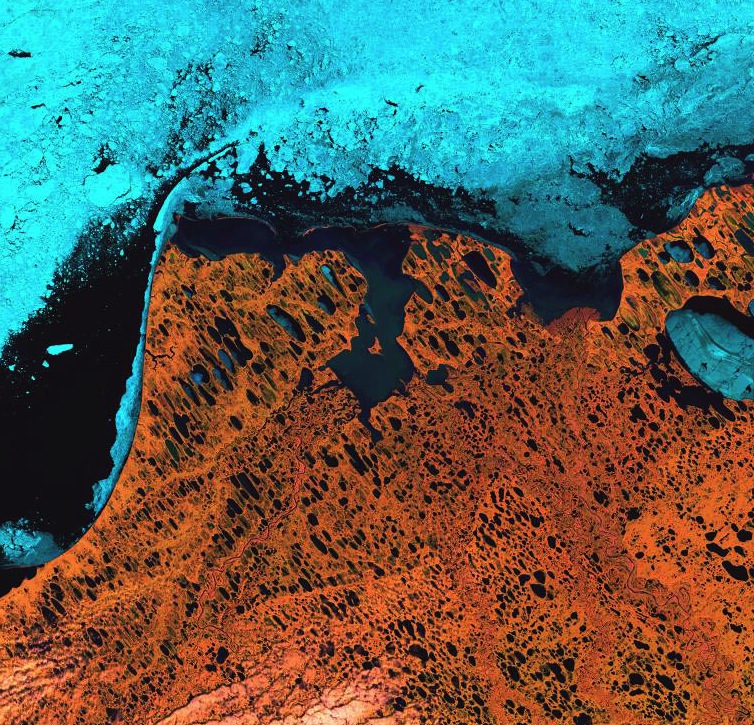Arctic Lakes Losing Ice

Alaska's Arctic lakes now freeze later and thaw earlier in the year than in 1950, leaving them vulnerable to water loss from evaporation and possibly adding to local warming, a new study finds.
The winter ice season near Barrow, Alaska, is 24 days shorter than in 1950, researchers reported Jan. 30 in the journal The Cryosphere. Lake ice is also thinner each winter. The scientists surveyed 402 lakes on the North Slope, the tundra-covered region where permafrost (permanently frozen ground) and shallow lakes dominate the terrain. In 2011, the lake ice was 38 percent thinner than in 1950, and 22 percent fewer lakes froze through to their bottoms.
"When we saw the actual numbers we were shocked at how dramatic the change has been," lead study author Cristina Surdu, of the University of Waterloo in Canada, said in a statement. [10 Surprising Facts about Arctic Sea Ice]
Surdu and her co-authors analyzed the changes in lake-ice thickness and ice cover with satellite images and climate model simulations (satellite images are only available from 1991).
The climate models suggest the Arctic lakes froze almost six days later and broke up about 18 days earlier in the winter of 2011 compared with the winter of 1950.
"The changes in ice and the shortened winter affect Northern communities that depend on ice roads to transport goods," Surdu said. For example, every winter, oil companies build haul roads over frozen lakes to carry supplies to Prudhoe Bay.
"The dramatic changes in lake ice may also contribute to further warming of the entire region, because open water on lakes contributes to warmer air temperatures, albeit to a lesser extent than open seawater," Surdu said.
Get the world’s most fascinating discoveries delivered straight to your inbox.
The Arctic is warming twice as fast as the rest of the planet, for reasons that may include its layered atmosphere, which traps heat, and the loss of sea ice and snow cover, which when present help reflect the sun's energy. The average air temperature in Barrow has increased by 3 degrees Fahrenheit (1.7 degrees Celsius) from 2000 to 2010. (Global mean temperatures rose about 0.2 degrees F, or about 0.11 degrees C.)
Email Becky Oskin or follow her @beckyoskin. Follow us @livescience, Facebook & Google+. Original article on Live Science.



